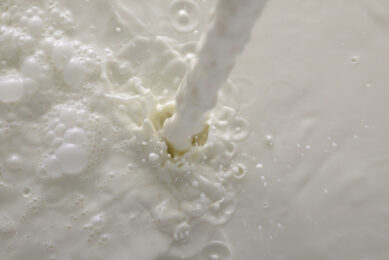Market highlights: Slower growth and curbed imports

After the initial shock and drop in dairy prices at the start of the Covid-19 crisis, global prices seem to have – for the most part – recovered. But analysts at Rabobank warn that in much of the world the lockdowns will be followed by economic recession.
“Slower growth will weigh on domestic demand as well as curb import demand in many regions,” is their forecast.
Australia has so far seen a significant recovery in national milk production and boosted dairy farmer confidence in many regions, according to Dairy Australia’s Dairy Situation and Outlook June 2020 report. After a challenging start to the season, national milk production has increased year-on-year for the past five months to April, leading Dairy Australia to moderate its milk production outlook for 2019–20 upwards to a drop of just 1–3% on last season; this equates to between 8.5 and 8.7 billion litres in total.

The outlook shows that while Covid-19 has negatively impacted demand and commodity pricing due to reduced activity in food service channels like restaurants and cafes, Australian retail demand rose as consumers stocked up on dairy products. Long life milk sales surged 76% at the onset of the virus, and fresh milk, yellow spreads, cheese and yoghurt sales volumes remain elevated.
Better conditions and improved confidence have resulted in a significant recovery in Australia’s milk pool, according to Dairy Australia’s Dairy Analyst Sofia Omstedt. “With more manageable input costs, generally favourable seasonal conditions and relatively strong farmgate milk prices this season, overall industry confidence has improved,” she says.
MARKET PRICES: See Dairy Global’s new market prices tool
Expectations
Omstedt emphasises, however, that Australia is not immune to the growing headwinds facing global markets. “The economic fallout of the crisis is expected to generate reverberations and reduce consumers’ purchasing power in key markets,” she says.
According to Rabobank’s global dairy report Waiting for the dust to settle, the global outlook for the dairy sector has improved significantly, but our expectations should not be the same as they were pre-Covid-19. Rabobank points out that with the rapid rebound in cheese prices in the US and less extreme increases elsewhere, it may be tempting to assume the market has recovered.
“As we begin to lift lockdowns and the mandated foodservice closures in much of the world, some limitations remain,” the report concludes. “Foodservices will take time to return to normal due to remaining capacity restrictions and cautious customers.”
The analysts expect retail sales to eventually return to normal. “However, the extent of the lockdown may have been long enough to form new habits, and some segments of consumers may continue preparing more food at home on an ongoing basis.”
Chinese import needs
Much of the world will emerge from the lockdowns into economic recession, the report warns. “Slower growth will weigh on domestic demand as well as curb import demand in many regions. South-East Asia has been a critical force in driving import demand opportunities for many milk producing areas. With an expected demand reduction coming from this region, and lower Chinese import needs, there could be a surplus of milk, contributing to higher stock levels in the second half of 2020.”
The US Department of Agriculture (USDA) is still cautiously optimistic and has raised its all-milk price forecast for 2020 to US$ 16.65 per hundredweight (cwt), as a result of recent increase in prices and higher expected demand. In May the forecast was US$ 14.55 per cwt. The all-milk price forecast for 2021 is US$ 16.20 per cwt, an increase from the May forecast of US$ 15.00 per cwt.
Wholesale prices for butter and cheese have been extremely volatile, the USDA points out, “plunging to very low levels in April and early May before rising to relatively high levels more recently”.
In the EU almost all commodity prices dropped from mid-March until mid-April, the Rabobank reports, but prices rebounded in May. “Announced milk prices for May and June indicate that the EU-average farmgate prices will retreat further but will remain above € 30/100kg,” according to the report.
MARKET PRICES: See Dairy Global’s new market prices tool
Join 13,000+ subscribers
Subscribe to our newsletter to stay updated about all the need-to-know content in the dairy sector, two times a week.










